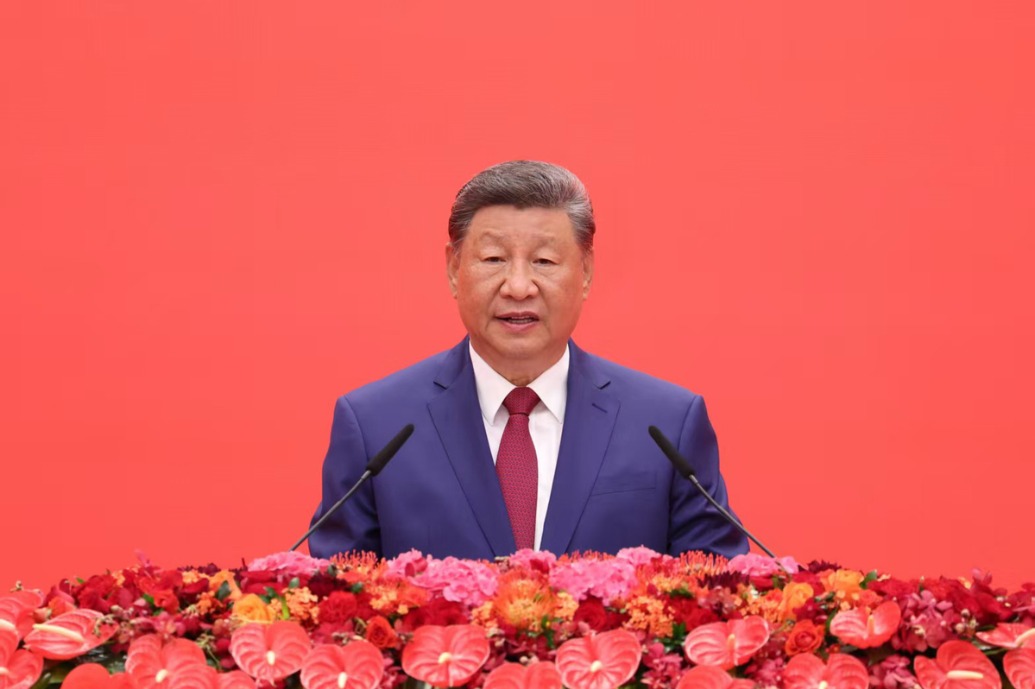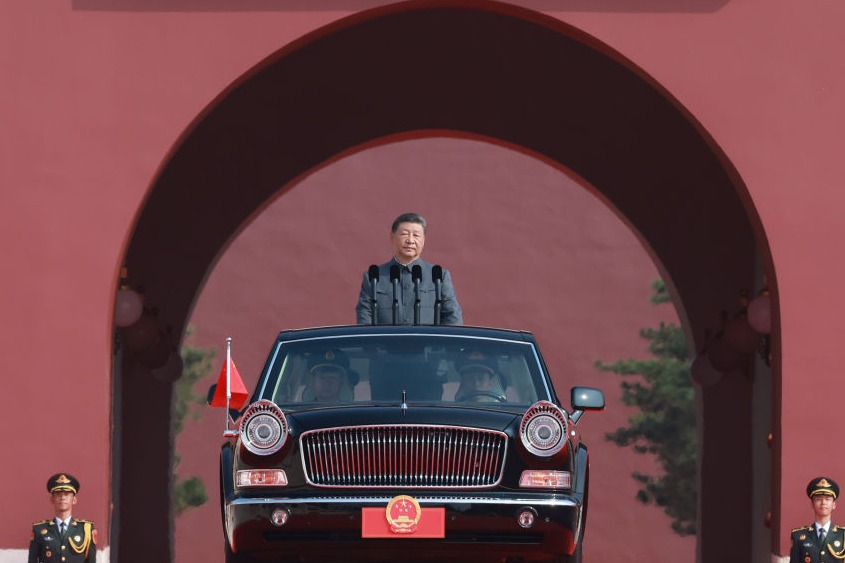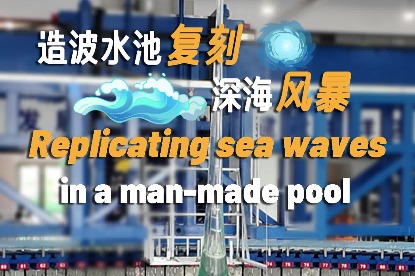Going forward, there are changes to mind in industry

Since the outbreak of the COVID-19 pandemic, China's industrial sector has taken the lead in resuming work and production, making important contributions to stabilizing both the domestic and global economies.
Although operating conditions of the nation's industrial enterprises continue to improve, they still face two major challenges.
First, already a reality, is that growing costs of raw materials have led to intensified industrial enterprise differentiation among various industries, affecting the balance and sustainability of the recovery of the industrial sector.
Second, as vaccines in Europe, the United States and elsewhere enter more arms, the gap between supply and demand in the global market will be effectively narrowed. That means, Chinese industrial product exports and the active import-substitution drive will face downside pressure, going forward.
PPI, CPI will diverge in H2
The National Bureau of Statistics said on June 27 that industrial enterprise profits continued to rebound in May. Profits of industrial enterprises above a certain scale increased 36.4 percent year-on-year in May, with the two-year average growth rate reaching 20.2 percent.
Total profits of industrial enterprises in the month reached 830.3 billion yuan ($128.54 billion), with a month-on-month growth of 8 percent.
Among the total 41 industries, four industries' combined monthly profits increased by 60.4 billion yuan from April, which was almost equivalent of the entire amount of the month-on-month increase in industrial profits in May.
The month-on-month growth rate of the profits of these four industries are automotives (41 percent), pharmaceuticals (37 percent), coal mining and washing (43 percent), and black metal smelting and rolling processing (14.3 percent).
The remaining 37 industries' combined profits hardly remained relatively stable from April to May, and 18 industries had zero or below-zero monthly profit growth rates. Among them, industries with profits dropping by monthly double-digit rates were rubber and plastic products (-10.4 percent), paper and paper products (-11.5 percent), textiles and apparel (-13.9 percent), agricultural and sideline food processing (-14.1 percent), metal products, machinery and equipment repair (-15.5 percent) and special equipment manufacturing (-22.7 percent).
Profit growth momentum diverged significantly among industries. Profits among mining and raw material manufacturing industries saw continuous growth, while manufacturing costs of midstream and downstream industries have risen rapidly, causing weaker profitability.
It can be predicted that for most of the second half of the year, the difference between the growth rates of the producer price index and the consumer price index will be significant.
Since 1996, the highest year-on-year growth in the PPI for consumer goods was about 5 percent (currently 0.5 percent), and the related PPI for production overall was roughly the same as the current level.
Why Chinese exports grow
Since last year, the strong recovery in China's industrial sector is related to the ongoing gap between supply and demand in European and North American economies. On one hand, the expansionary policies in Europe and the US, alongside vigorous recovery packages for individuals, have kept total demand at relatively stable levels. On the other hand, the pandemic has disrupted the production and affected supply. As a result, overseas market demand is greater than supply, and Chinese exports continue to grow.
However, the supply and demand gap in overseas markets may narrow in the second half of this year.
First of all, as Europe and the US advance vaccinations in the second half, production and supply capacity will be restored. It is expected that in the second half, the labor force participation rate in Europe and the US will markedly increase-but this does not mean that the unemployment rate will decrease simultaneously-so that the supply and demand gaps in Europe and the US will be significantly reduced.
Take the US as an example. The year-on-year growth rate of its citizens' average disposable income in 2020 was 6.5 percent, the highest since 1989. With the rescue and relief policies, the willingness of individuals to get jobs has declined and the labor force participation rate has continued to decline.
However, as such personal assistance policies are set to expire in September, economic fundamentals in the US will basically return to normal, while the labor force participation rate will also rise significantly so that its supply capacity will be significantly restored and improved.
Second, on the demand side, the expansionary policies of Europe and the US cannot be as strong as last year. On June 24, US President Joe Biden expressed support for the bipartisan infrastructure framework and called on Congress to pass it. The infrastructure plan aims to invest roughly $1 trillion over the next five years, significantly less than the original plan of $2.3 trillion.
At the same time, due to the recent increase in inflationary pressure, monetary policies of many countries such as the US have also been caught in a dilemma to a certain extent. With the gradual and effective control of COVID-19 in major developed economies, macroeconomic policies are therefore returning to a more stable state.
Third, the recovery of demand in Europe and the US in the second half of the year will be mainly in the services sector rather than industrial products.
Still, taking the US as an example, with the strong recovery policies in 2020, services consumption expenditure in the country fell by 5.4 percent year-on-year-a record decline since the Great Depression in the 1930s-while personal consumption expenditure for durable goods and nondurable goods increased on a yearly basis by 5.5 percent and 2.1 percent, respectively. The growth rate of consumer spending on durable goods reached the highest level since 2004.
Once the pandemic is brought fully under control, the recovery of personal consumption will be mainly in services. And such a recovery will provide a rather limited boost to Chinese exports.
Fourth, the recovery of production in Europe and the US may have an impact on China's import-substitution production activities.
A typical industry in this regard is the automobile engine sector. In 2020, China's auto engine imports declined 30.2 percent, while auto engine exports increased 39.2 percent. Under such circumstances, import-substitution production activities in the industry were very obvious. The revenue of the industry was 233.7 billion yuan last year, up 19.7 percent from 2019, which was significantly better than the zero or negative growth rates seen since the data became available in 2018.
Profits from the auto engine sector increased 15 percent in 2020, which was significantly better than the performance of the previous two years. But as production resumes overseas, import-substitution and export activities will both be impacted.
China's share in global exports is currently very high, but it is inevitable that the share will fall in the second half or next year.
We need to stabilize domestic demand to provide a buffer against the decline in export growth in order to avoid impact on domestic economic stability caused by export fluctuations.
The author is a research fellow of the Institute of World Economics and Politics at the Chinese Academy of Social Sciences and director of the Research Department of the China Finance 40 Forum.
The views don't necessarily reflect those of China Daily.

Today's Top News
- China stages cultural gala for V-Day commemoration
- Clarion call for safeguarding multilateral trade system for the common good of world
- Xi delivers speech at V-Day reception
- China committed to path of peaceful development: Xi
- Xi appears at center of Tian'anmen Rostrum
- Event to share glory of victory in war of resistance






























